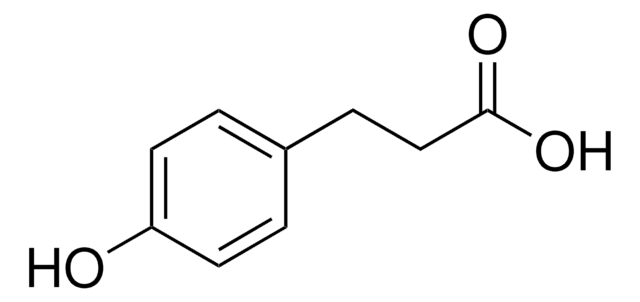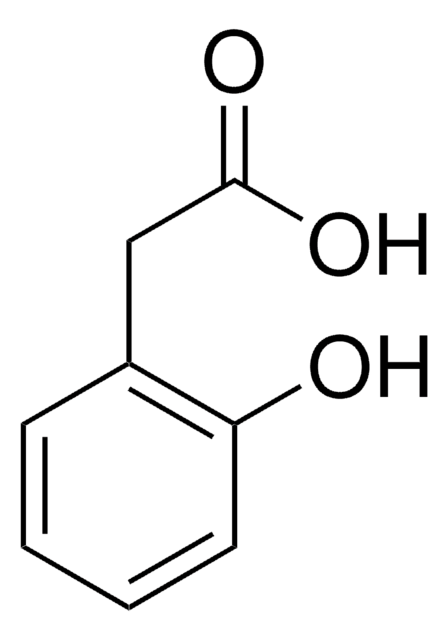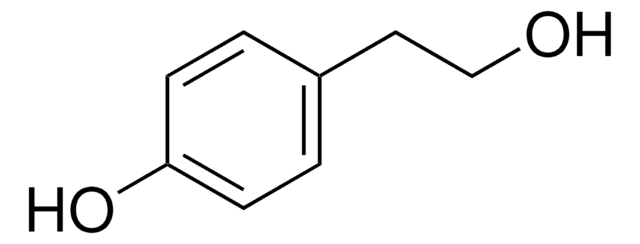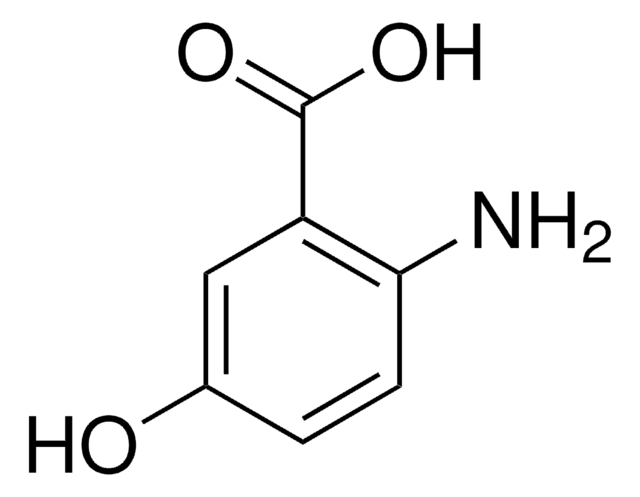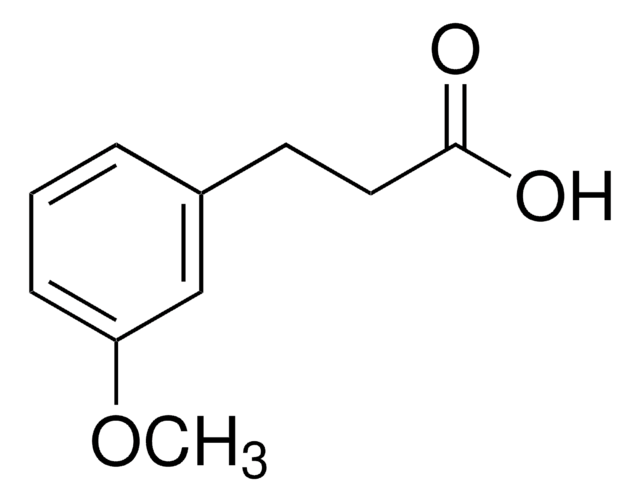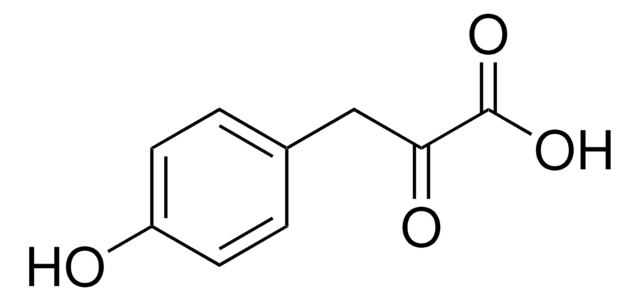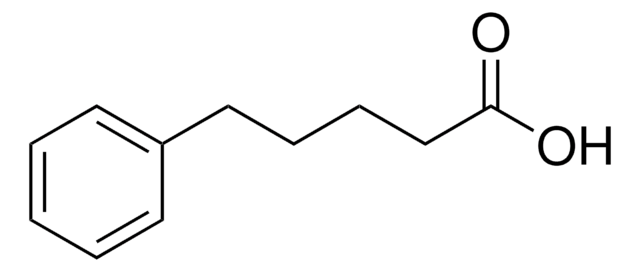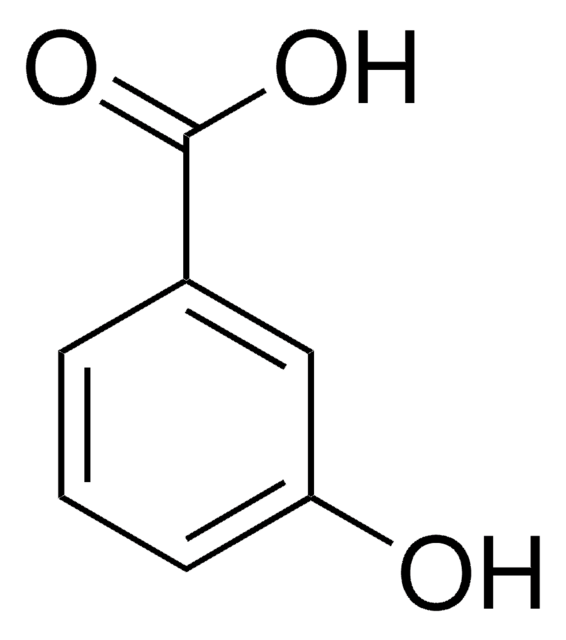Kluczowe dokumenty
H49901
3-Hydroxyphenylacetic acid
≥99%
Synonim(y):
(3-Hydroxyphenyl)acetic acid, (m-Hydroxyphenyl)acetic acid, 2-(3-Hydroxyphenyl)acetic acid, 2-(3′-Hydroxyphenyl)acetic acid, 3-Hydroxybenzeneacetic acid, 3′-Hydroxyphenylacetic acid
About This Item
Polecane produkty
Poziom jakości
Próba
≥99%
mp
129-133 °C (lit.)
ciąg SMILES
OC(=O)Cc1cccc(O)c1
InChI
1S/C8H8O3/c9-7-3-1-2-6(4-7)5-8(10)11/h1-4,9H,5H2,(H,10,11)
Klucz InChI
FVMDYYGIDFPZAX-UHFFFAOYSA-N
Szukasz podobnych produktów? Odwiedź Przewodnik dotyczący porównywania produktów
Hasło ostrzegawcze
Warning
Zwroty wskazujące rodzaj zagrożenia
Zwroty wskazujące środki ostrożności
Klasyfikacja zagrożeń
Eye Irrit. 2 - Skin Irrit. 2 - STOT SE 3
Organy docelowe
Respiratory system
Kod klasy składowania
11 - Combustible Solids
Klasa zagrożenia wodnego (WGK)
WGK 3
Temperatura zapłonu (°F)
Not applicable
Temperatura zapłonu (°C)
Not applicable
Środki ochrony indywidualnej
dust mask type N95 (US), Eyeshields, Gloves
Wybierz jedną z najnowszych wersji:
Masz już ten produkt?
Dokumenty związane z niedawno zakupionymi produktami zostały zamieszczone w Bibliotece dokumentów.
Klienci oglądali również te produkty
Nasz zespół naukowców ma doświadczenie we wszystkich obszarach badań, w tym w naukach przyrodniczych, materiałoznawstwie, syntezie chemicznej, chromatografii, analityce i wielu innych dziedzinach.
Skontaktuj się z zespołem ds. pomocy technicznej
